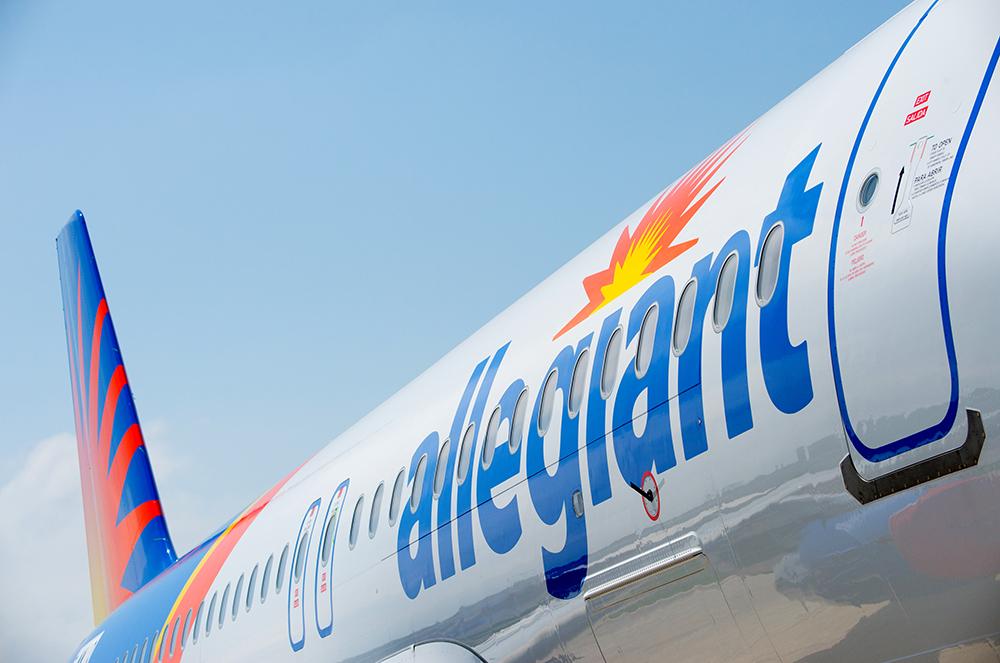
Allegiant Air’s decision to add at least 50 Boeing 737 MAXs to its all-Airbus fleet was influenced at least in part by aftermarket-related benefits that the new aircraft will bring to its operation.
“It had to be a compelling opportunity for us to do the deal,” CFO Greg Anderson says, citing new aircraft “pricing” and near-term delivery positions as several key factors. But Allegiant’s commitment to brand new assets—only its second firm order in its 25-year history, following a 13-aircraft A320ceo purchase in 2015—goes beyond cheap, available aircraft. With more than 90 aircraft in its fleet acquired on the secondhand market, Allegiant leans heavily on aftermarket support—both to re-configure aircraft being introduced and keep them flying.
The airline’s executives have been vocal about supply-chain challenges during the downturn, stemming from a variety of factors. They range from travel restrictions hampering work with foreign vendors to the simple challenge of finding enough parts or overhaul slots for its airframes and engines—all of which are CFM International CFM56-5Bs—as MRO providers work to ramp back up to support the recovery.
Purchasing new aircraft helps de-risk some of these issues. The 737 MAX’s maintenance honeymoons mean initial, major overhauls won’t be needed for years. Choosing the 737 MAX and its CFM-supplied powerplants keeps engine support simplified. Allegiant also entered into a 12-year agreement with CFM to support both the new engines and some in the existing fleet, adding some certainty to its maintenance programs.
"It allows us to better manage those engines to the end of their life and so it does provide us enormous flexibility,” Anderson says.
The 737s will be used both for expansion and to replace older A320ceos, which the Las Vegas-based airline began acquiring used in late 2012 to replace its fleet of MD-80s. The company said the deal with Boeing will allow it to replace aircraft that are scheduled to retire while also expanding its fleet at a projected 10% annual growth rate. About 20% of Allegiant’s current fleet of 108 A319ceos and A320ceos—all powered by CFM International CFM56-5B engines—are at least 20 years old, Aviation Week Fleet Discovery data show.
Allegiant’s target of a 10% annual growth rate means it will have to add up to 150 aircraft to its fleet in the 2023-2029 timeframe—100 for growth and 50 to replace aging A319s and A320s. Its asset-exit strategy includes jettisoning aircraft and engines as they approach major overhauls. The CFM deal combined with an existing, recently renewed CFM56 overhaul contract with SR Technics gives Allegiant more options for re-purposing used materials from its own fleet back into its engines—a strategy it used on its MD-80 fleet.
"We're just working in the used market and able to financially manage the fleet versus overhaul and spending money that way,” CEO Maurice Gallagher says. "I'm very comfortable we'll get the most out of these motors because we've done it before.”
Adding new aircraft also eliminates reconfiguration costs and related logistical headaches that can come with relying on the used market. As airlines recover from the current downturn, postponed projects such as cabin reconfigurations may soon be back on the table. Besides, there is never a shortage of leased aircraft in transition taking up hangar space and aftermarket resources.
The new 737 MAXs better position Allegiant to avoid these bottlenecks for a few years.
Adding a new fleet type means taking on some additional costs, such as pilot training and spare parts stocking, ahead of the first deliveries. Critics point to these factors as cost-escalating risk, but Allegiant’s aggressive growth plans meant some level of mixed fleet was inevitable.
It could keep adding used A320s, but, eventually, they will have to be replaced. Ordering new A320neos would have simplified some personnel training compared to adding 737s since the A320ceo and A320neo share a common cockpit, but such a deal still would introduce a new engine type—the Leaps.
“New airplanes have a position in our situation, particularly when you consider the fact that at 150 to 200 airplanes, if we try to do all used...You just can't do it,” Gallagher says.
Despite the major Boeing commitment, Allegiant’s executives emphasize that neither their Airbus fleet nor preference for used aircraft is under threat. The airline’s notional year-end 2025 fleet of 171 aircraft includes the 50 737s and 22 more “placeholder” aircraft, which “we expect to be primarily comprised of used A320s,” Gallagher says.





